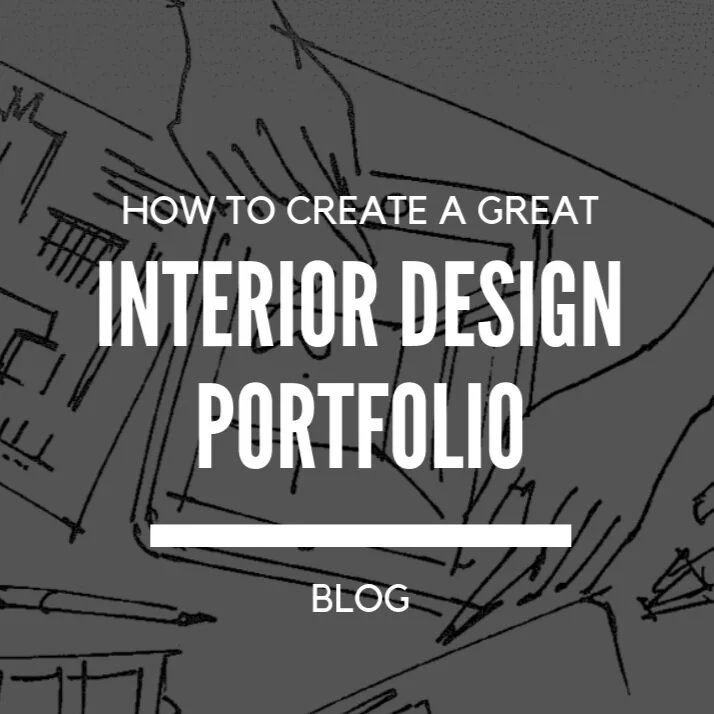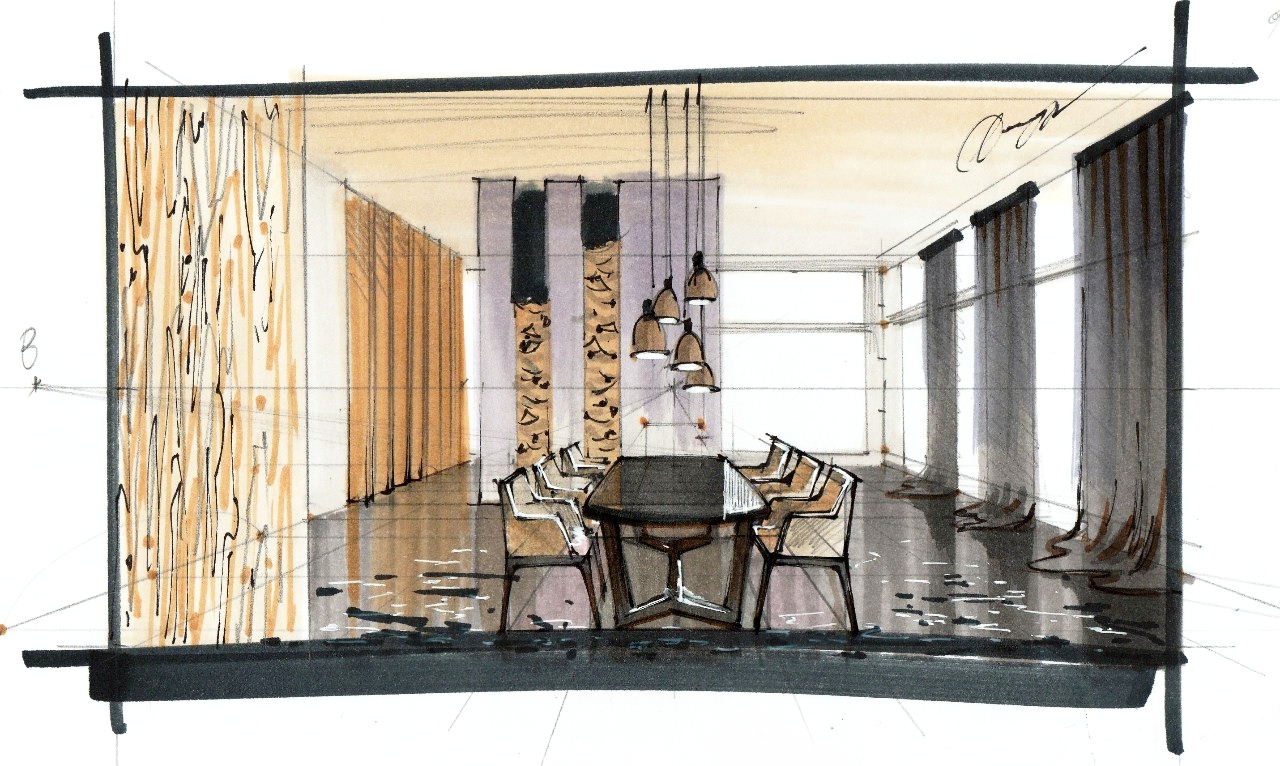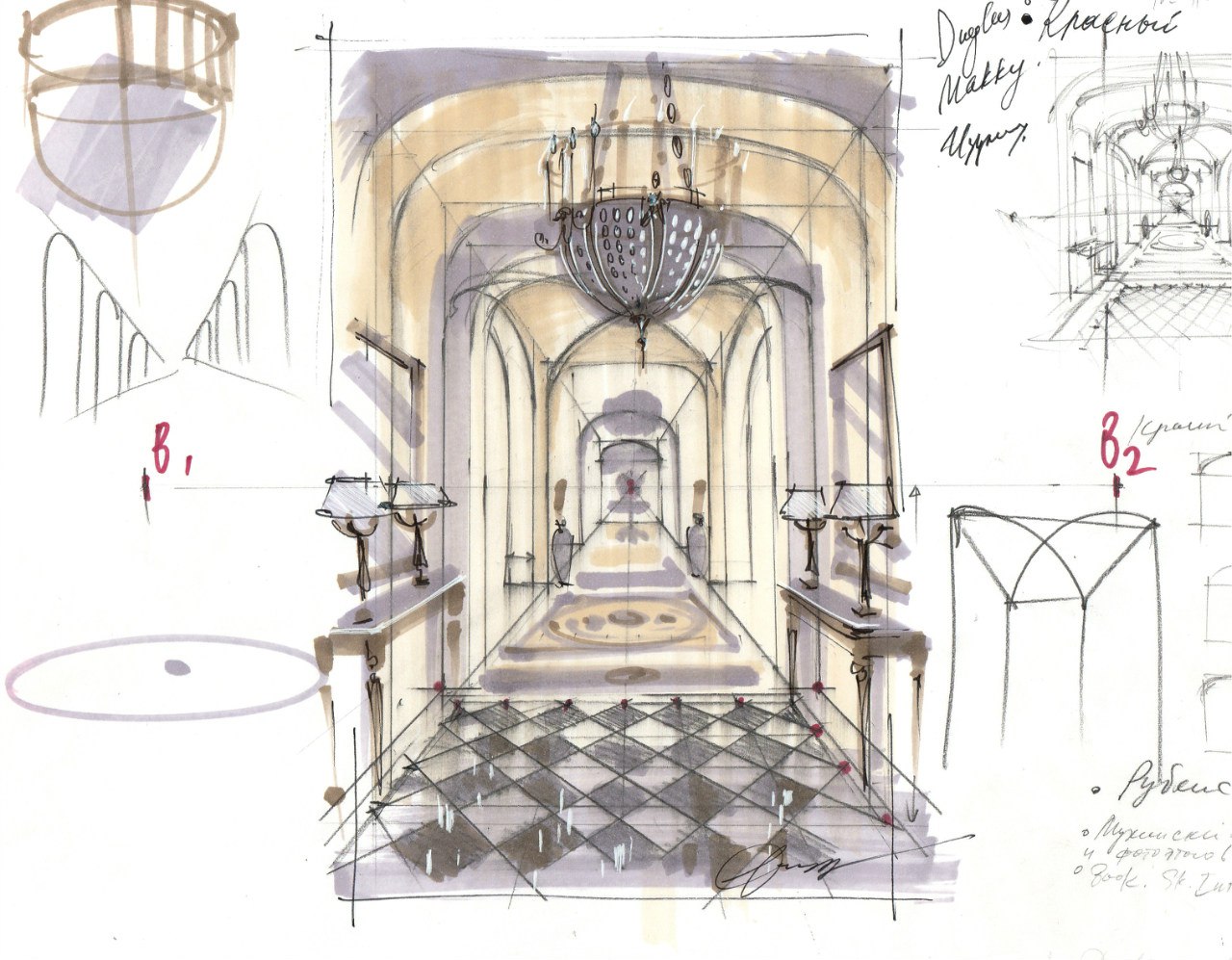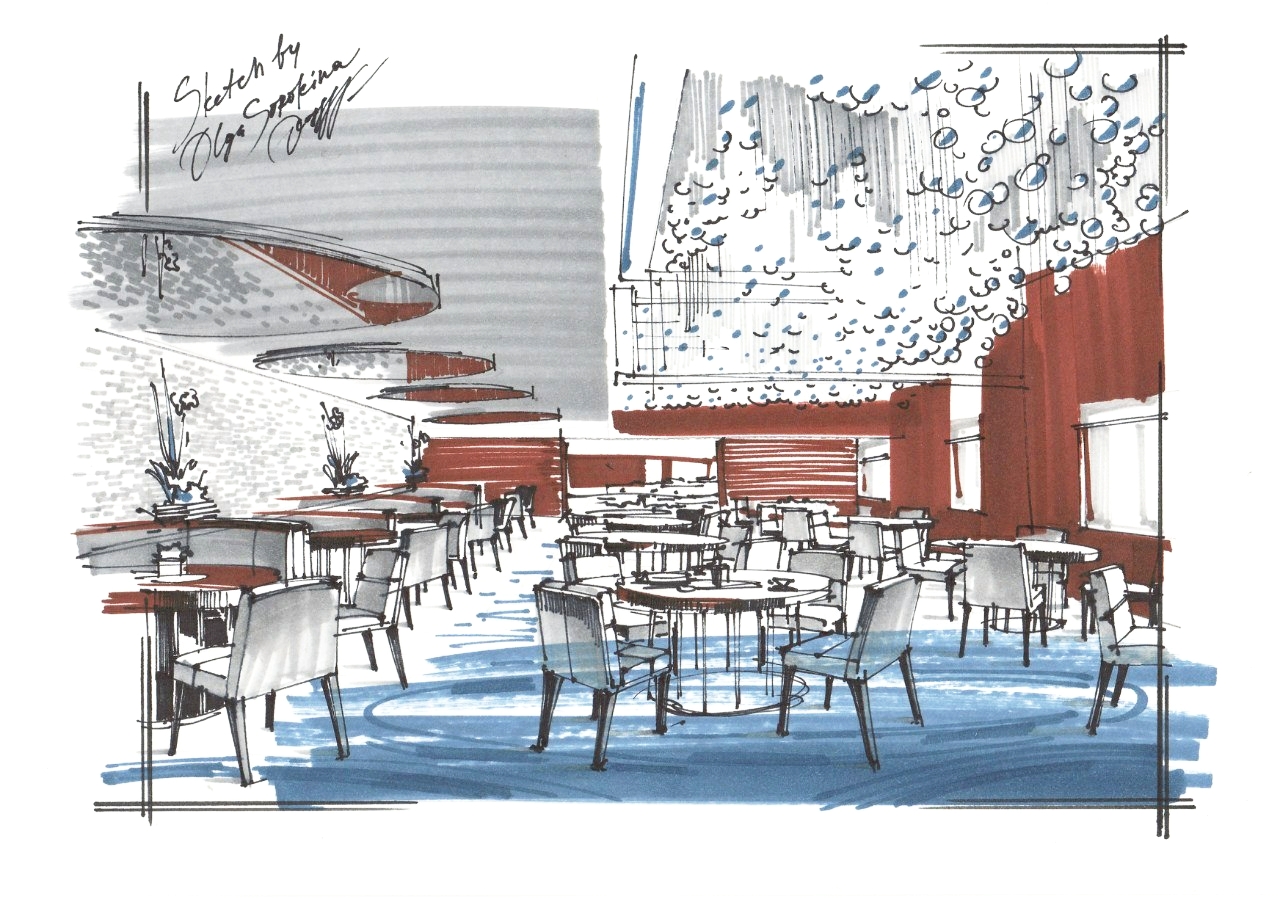
Watch my interior drawing tutorials and tips on id portfolios on YouTube:
Check my latest interior sketches and behind the scenes on Instagram Stories:
Whether you are a beginner in the design world or a mature interior designer, this article can help you with some basic steps in creating your first portfolio; also, you may find here some fresh and exciting ideas for an existing one. Some paragraphs here I took from my best-selling book “The SKETCH“. Enjoy!
P.S. Special “perspective sketh“ gift is waiting for you at the end of the article.
In this article, I will cover:
You need a portfolio to show people so that they can see what your design skills are and what your expertise is. It should be professional looking and attractive from a design perspective, yes, but the content is king, never forget about this. That’s why I’m going to be covering here necessary things to include in your interior design portfolio.
To begin with, let’s define your «target audience» as that will affect the content. Who will see your portfolio? Is it an employer, a potential client, or maybe people from interior design college you want to apply? Think about it, and then you can create a killer portfolio that will blow their minds! Remember, your interior design portfolio can actually prove you are a professional without you saying a word! Your portfolio can also set you apart from other designers and present your work in the best possible light. Visuals speak loud, design speaks even louder.
 my online course “BASE": a Course Which Teaches All the Basic Techniques You Need to Implement Sketching in Your Interior Design Practice(For Interior Designers & Architects)" width="1280" height="766" />
my online course “BASE": a Course Which Teaches All the Basic Techniques You Need to Implement Sketching in Your Interior Design Practice(For Interior Designers & Architects)" width="1280" height="766" />
Please remember that interior design is not the same as interior decorating, that is the one big mistake people make all the time. Some customers really think that we just select pillow cushions, and blankets, and picking wall colours all day long. To be true, that is about 10% of what we actually do. Interior design is essentially like architecture, in some countries, it’s even called «interior architecture». You can get your diploma in interior decorating in 2-3 years, whereas interior design typically is a four to six-year degree program.
In interior design, you learn about constructions, floor plans, history of interior design, styles, functionality, ergonomics, lighting, colour theory, client communication, building codes, mechanical systems. It’s a lot more than just designing a room. In this article, I will cover the decorator’s portfolio as well, so keep reading.
Well, here, in an interior designer’s portfolio, your «target audience» can be both a potential employer or a client.
First, let’s talk if it is an employer:
Looking for a position in interior design or architecture firm? Your resume, in that case, should cover your educational background, experience, and qualifications. My recommendation is to focus on your professional skills in this type of portfolio.
For example, you can list your skills, such as:
It’s also a good idea to demonstrate a progression of a project from the concept to the final design, show your sketches, sample design boards, floor plans, and any other mechanical plans, elevations, and final 3D renderings.
Now, let’s talk if it is a client and if you already have some experience:
Your resume here can cover not only your experience, educational background, and qualifications but also your design philosophy. Remember to add contacts or your business card.
Include client recommendations if you have any, remember, that testimonials work better than anything.
Show what your customer wants, if he came to you for a residential project, show him your completed projects of apartments, studios, duplexes, houses, etc. I mean, at least 80% of your portfolio should be residential, the other 20% you can make commercial if you wish.
Try to include real photos, not only 3D renderings, layouts, mood boards, and drawings, as photos of completed projects will dramatically enrich your portfolio and gain the trust of the customer. Every time you finish a project, hire a photographer or a friend of yours who can take professional photos of your accomplished interior.
Focus on visuals: photos, 3D views, hand renderings, and sketches; clients love it. Try not to overwhelm your customer with technical drawings and AutoCAD layouts; the majority of them won’t understand all that stuff.
Include project location with its start and completion dates, describe the client’s directive. Keep it short and sweet. You can use here «before» and «after» photos.
If you have any publications in interior design magazines, design awards — wonderful, include them as well. Add certificates and any other documents that show your accomplishments.
 my online course “TEXTURES“: a Beginner Course on Essentials of Sketching with Markers(For Interior Design Students and Those New to Sketching)" width="1280" height="997" />
my online course “TEXTURES“: a Beginner Course on Essentials of Sketching with Markers(For Interior Design Students and Those New to Sketching)" width="1280" height="997" />
You want to sell with your portfolio your creative services and your expertise. Remember that the best interior designer with the worst sales skills will never have as much business as the worst interior designer with the best sales skills. Think about what your client really wants and needs and how you are going to be able to deliver on those wants and needs. How will he benefit from you rather than the other interior designer? What value do you bring to the table?
Another important thing is to keep your portfolio up-to-date, so check it once a year or every other year and delete some outdated projects and include your new designs. If you don’t want to offer it, don’t show it, let it be your mantra for the portfolio creation process. I mean, if your goal is to work on restaurants and hotels in a contemporary style, don’t show your clients examples of residentials in classic.

Usually, you had to go for an interview and show them pieces of artwork, life drawings, classic still-life drawings, maybe Photoshop collages, you have to show your artistic abilities and that you could drop. Just collect your art pieces, take photos of them. You can simply create a digital portfolio in Word or PowerPoint by labelling your art pieces, add sizing and description, for example, 50x60 cm, oil on canvas, name, etc. When entering an interior design school, it is a great advantage that you have those drawing skills.
Remember that each design school’s committee wants the best possible students to study in that school because their successful graduates and their testimonials are their best ads and marketing tools.
Good luck to you if you are currently applying for colleges or universities!
There are all sorts of portfolio formats:
If you choose a printed version, I would recommend horizontal A3 format (it is portfolio classic) as in square, A4, or vertically oriented format you will find that it’s harder to make a good composition and show your projects properly. Make sure you use high-quality images for your portfolio, so they look nice when printed. Use high-quality paper, the feeling even the texture, the feeling in the hands of your portfolio, fonts, and colour brightness matters.
Online or PDF format is so accessible now, it’s eco-friendly, and it’s most significant advantage is that colours look so much deeper and brighter in comparison with the printed version.
You can create your portfolio in Adobe Photoshop, Corel Draw, InDesign, Apple Pages, Keynote, PowerPoint. Select the program you love and feel familiar with it.
Check also Instagram @letsshowitbetter, where Steven shares his tips on presentation boards. Steven and I both were speakers at ArchiMentors Summit, which took place October-November, 2020.
You might find these links helpful to create the best possible portfolio:
I believe we, as creatives, can find inspiration pretty much from any sources; it might be a well-design magazine, nice typography, a good book on graphic design, even old-school posters — just look around!
P.S. Well, my creative friend, I hope you enjoyed this article. May I ask you to share it on your social media, please. Thanks in advance and good luck with your portfolio! I’m sure it will look amazing!